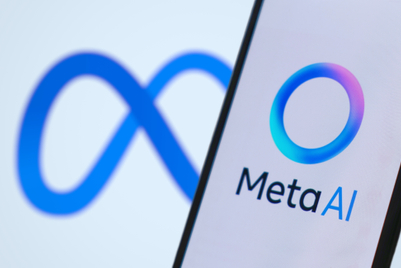
Since launching his semi-automated PR agency earlier this year, serial entrepreneur Chris Chong has been ruffling some feathers in the industry. His latest startup, SumoStory, uses computer algorithms to play the role of matchmaker between startup company press releases and journalists, streamlining media relations in the process.
While some laud him for bringing efficiency and cost-effectiveness to the business, others call him a PR imposter or a ‘reductionist’ who may be debasing and commoditizing the profession by slashing prices and letting machines do more of the work.
Ahead of Campaign’s conversation with Chong at Spikes Asia 2017 this week, we wanted to outline some of potential and limitations of applying AI in the profession
What automation can do for PR
1. Gather information
Some of the most basic PR functions involve first building a profile of companies, media or influencers. Instead of have a junior account manager spend time pulling in research from countless sources, it could be simpler to let the machines do it. Chong sees natural language processing (NLP) as a key tool to connect separate bits of unstructured information from all over the internet and to bring it together into cohesive sentences to create backgrounders similar to Wikipedia pages.
“Even though it’s devoid of any emotion or any insight, sometimes the job of PR is to just create a fact sheet with a hook or a lead,” Chong says. In fact, by his estimation, “about 80 percent of writing a press release could be automated” using scrapers. The last 10 to 20 percent, meanwhile, would require a PR practitioner to look at news and recent trends in the industry to provide the right hook for a journalist.
2. Accurately pitch stories
Chong works with an algorithm created in-house to take a press release and match it with the relevant keywords and phrasing. "The matching algorithm allows us to upload the details of the startup and press release and the system automatically ranks journalists based on relevance," Chong said.
In order for the algorithm to be fully automated, Chong is running trials that generate a feedback loop based on inserted data. "Then it will cut out human labor altogether," Chong says, "reducing the time and improving the accuracy of matching between journalists and clients."
On the supply side, a deployed scraper goes through the portfolio of a journalist, converging on a Venn diagram to find the sweet spot between topics the journalist wants to cover and topics they have covered. This is then matched with the processed press release, prompting the release of a personalized email, and directed at the targeted journalist.
Although the matching algorithm is in its infancy, it currently saves a lot of time trying to manually match a client with a journalist. Chong claims that SumoStory saves brand marketers up to an hour that would otherwise have been exhausted in scanning through an excel spreadsheet per a press release to find suitable journalists.
3. Lower prices
By cutting out time spent by middle managers on accounts, basic PR services could in theory become more affordable than full-service fees. Chong prices his suite of services between $1200 and $2400 Singapore dollars for ideations and pitches over a six-month period that would involve a basic PR strategy and more regular reporting at the top end.
Since traditional PR firms might charge monthly retainers of around $5000 per month, Chong is targeting his services at startups and smaller businesses that cannot afford to hire an agency but still have a strong basic needs to get their brand out in the market and add some legitimacy to their work by filling-in the ‘news’ or ‘in the media’ sections of their websites.
In this way, Chong feels his fledgling agency really will not compete with the larger PR firms who perform a much more complex suite of services for multinationals. “I’m really not in direct competition with them," Chong says. "There’s no benefit for them to reduce their prices to my level.”
(Story continues below)
What automation cannot do for PR
1. Provide human touchpoints
Even Chong admits PR is “very much a human-centric relationship based industry” and “pockets” of it will never be automated. Providing clients with face-to-face reassurance and understanding about their goals, strategies and objectives cannot be handed over to machines.
While computer programmes can work the internet for a client, they cannot ‘work a room’ like a PR professional and build emotional and trusted relationships built around face-to-face connections.
An algorithm might be able to sift through market trends and come up with a client risk profile and analysis. But in the face of a brand crisis, few clients would ignore real experienced advice on how to properly word a response in the midst of a social media disaster.
“Technological solutions…can provide scalability, and capture the long tail at a reasonable price point,” notes Ross Rowbury, president and CEO of Edelman Japan. “The question is whether they can also reply to a world that is beginning to scream for authenticity, reliability and ethics in information and communications. That is something which only ‘human’ communications professionals can deliver.“
2. Set stories in context
This need for authenticity, reliability and ethics in an age of fake news brings us to the next major point: context. Remember Chong's 10 to 20 percent estimate of the press release writing process where a PR professional must gauge the prevailing winds inside and outside of the market? It's extremely important. Some might also argue that it involves much more than 10 to 20 percent of the time involved.
One Australian PR agency chief told Campaign he’s skeptical that an AI, for instance, can successfully sell stories and messaging by catering to the right journalistic instincts. Journalists will feel out their sources through words, tone and body language to test for genuineness and authenticity. He feels journalists will quickly learn to a scan a pitch and say to themselves, “yep, that’s an AI-written pitch” if its devoid of the right tone and emotion. Worse, automated pitches that don’t rely on good copyediting could easily fall into the bad taste bucket if the release does not take into account news and events that might have just happened.
3. Change a failing model (media relations)
Another Hong Kong agency chief argues applying automation to media relations, as SumoStory is doing, is a flawed approach because the future of PR is moving away from the traditional media relations field anyhow.
“It’s not about better connecting an irrelevant in-house PR person’s dated press release with an equally irrelevant reporter,” he said. “The future is rising above media relations and advising management about real solutions to real problems.”
As traditional media loses its sway to social media influences, traditional media relations PR roles are giving way to social media specialists and ‘brand solutions providers’.
But the big question may not be whether the traditional press release may stick around long enough to become largely automated by distribution, but whether the same ability for machines to gather and refine storylines and do much more may soon find other purposes.
That’s the view of FleishmanHillard’s Greater China president Rachel Catanach, who argues that in her profession, AI “will potentially have a bigger impact than the launch of the Internet. Many aspects of the job will be able to be automated,” she says,” such as media monitoring, content development, and translation. Rather than being seen as a threat, PR professionals and communications firms should look at AI as an opportunity to focus on higher value work and drive efficiency into their business.”


.jpg&h=334&w=500&q=100&v=20250320&c=1)
.jpg&h=334&w=500&q=100&v=20250320&c=1)
.jpg&h=334&w=500&q=100&v=20250320&c=1)




.png&h=334&w=500&q=100&v=20250320&c=1)








.png&h=268&w=401&q=100&v=20250320&c=1)
